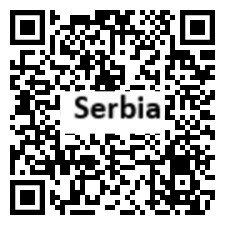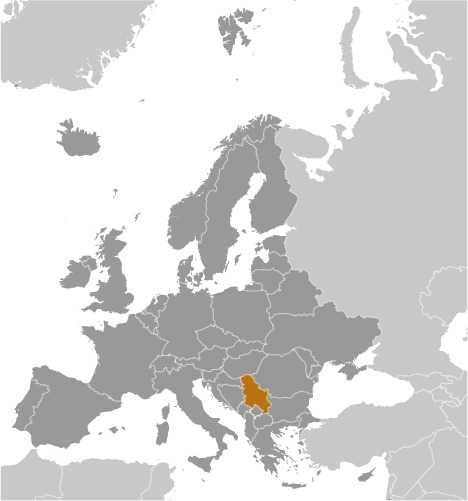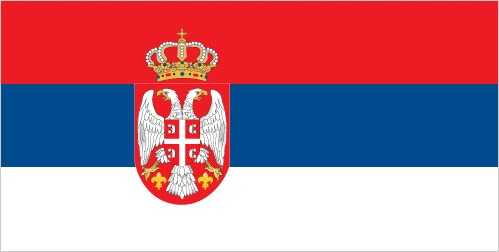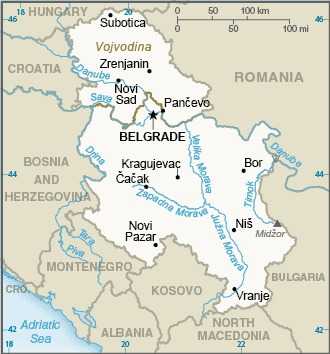Introduction
Background
In 1918, the Croats, Serbs, and Slovenes formed a kingdom known after 1929 as Yugoslavia, which became the Socialist Federal Republic of Yugoslavia in 1945. In 1989, Yugoslavia broke up along ethnic lines, and the ensuing conflicts in Serbia lasted until NATO intervention in 1999. Serbia is currently a candidate for EU membership.
Geography
Area
total: 77,474 sq km
land: 77,474 sq km
water: 0 sq km
Climate
in the north, continental climate (cold winters and hot, humid summers with well-distributed rainfall); in other parts, continental and Mediterranean climate (relatively cold winters with heavy snowfall and hot, dry summers and autumns)
Natural resources
oil, gas, coal, iron ore, copper, zinc, antimony, chromite, gold, silver, magnesium, pyrite, limestone, marble, salt, arable land
People and Society
Population
total: 6,652,212
male: 3,242,751
female: 3,409,461 (2024 est.)
Ethnic groups
Serb 83.3%, Hungarian 3.5%, Romani 2.1%, Bosniak 2%, other 5.7%, undeclared or unknown 3.4% (2011 est.)
Languages
Serbian (official) 88.1%, Hungarian 3.4%, Bosnian 1.9%, Romani 1.4%, other 3.4%, undeclared or unknown 1.8%; note - Serbian, Hungarian, Slovak, Romanian, Croatian, and Ruthenian (Rusyn) are official in the Autonomous Province of Vojvodina; most ethnic Albanians boycotted the 2011 census (2011 est.)
Religions
Orthodox 84.6%, Catholic 5%, Muslim 3.1%, Protestant 1%, atheist 1.1%, other 0.8% (includes agnostics, other Christians, Eastern, Jewish), undeclared or unknown 4.5% (2011 est.)
Population growth rate
-0.61% (2024 est.)
Government
Government type
parliamentary republic
Capital
name: Belgrade (Beograd)
Executive branch
chief of state: President Aleksandar VUCIC (since 31 May 2017)
head of government: Prime Minister Milos Vucevic (since 2 May 2024)
Legislative branch
description: unicameral National Assembly or Narodna Skupstina (250 seats; members directly elected by party list proportional representation vote in a single nationwide constituency to serve 4-year terms)
Economy
Economic overview
upper middle-income Balkan economy; current EU accession candidate; hit by COVID-19; pursuing green growth development; manageable public debt; new anticorruption efforts; falling unemployment; historic Russian relations; energy import-dependent
Real GDP (purchasing power parity)
$139.193 billion (2022 est.)
$135.732 billion (2021 est.)
$125.997 billion (2020 est.)
Real GDP per capita
$20,900 (2022 est.)
$19,900 (2021 est.)
$18,300 (2020 est.)
Agricultural products
maize, wheat, sugar beets, milk, sunflower seeds, potatoes, plums, apples, barley, soybeans (2022)
Industries
automobiles, base metals, furniture, food processing, machinery, chemicals, sugar, tires, clothes, pharmaceuticals
Exports
$39.905 billion (2022 est.)
$34.035 billion (2021 est.)
$25.5 billion (2020 est.)
Exports - partners
Germany 13%, Bosnia and Herzegovina 7%, Italy 7%, Hungary 6%, Romania 4% (2022)
Exports - commodities
insulated wire, copper ore, plastic products, electricity, rubber tires (2022)
Imports
$47.395 billion (2022 est.)
$39.476 billion (2021 est.)
$30.177 billion (2020 est.)
Imports - partners
Germany 11%, China 8%, Hungary 8%, Russia 7%, Italy 6% (2022)
Imports - commodities
electricity, crude petroleum, natural gas, plastic products, packaged medicine (2022)
Exchange rates
Serbian dinars (RSD) per US dollar -
Exchange rates:
111.662 (2022 est.)
99.396 (2021 est.)
103.163 (2020 est.)
105.25 (2019 est.)
100.175 (2018 est.)
Page last updated: Tuesday, May 07, 2024




